Hygrophoropsis aurantiaca
Scientific name: Hygrophoropsis aurantiaca (Wulfen) Maire
Derivation of name: Hygros means "moisture" or "wetness,"
phoros means "bearing" or "carrying," and opsis means
"resembling" or "similar to."
Hygrophoropsis, then, means
"resembling Hygrophorus." Aurantiaca means
"orange-colored."
Synonyms: Cantharellus aurantiacus (Wulfen) Fr.;
Clitocybe
aurantiaca (Wulfen) Fr.
Common name(s): False chanterelle
Phylum: Basidiomycota
Order: Boletales
Family: Hygrophoropsidaceae
Occurrence on wood substrate: Saprobic; single to grouped
or scattered on the ground under conifers and on decayed
conifer
wood and other conifer debris;
summer through fall.
Dimensions: Caps 2.5-9 cm wide; stipes 2.5-10 cm long and
0.5-1.5 cm thick.
Cap: Smooth to minutely velvety; color variable but usually
orange-yellow
to orange-brown,
darker in the center.
Gills: Decurrent, thin but with blunt edges, repeatedly forked;
pale yellow-orange
to bright orange..
Spore print: White.
Stipe: Central to eccentric; dry; finely hairy; often curved;
pale yellow to orange.
Veil: Absent.
Edibility: Not recommended. This species is eaten by some
people but others
report gastrointestinal disturbances. Further
caution is
warranted because of the possibility of confusion
with the poisonous Omphalotus illudens. Omphalotus
illudens has sharp-edged, unforked gills, and grows in
clusters.
Comments: Called the false chanterelle due to its resemblance
to Cantharellus
cibarius, an edible chanterelle. Cantharellus
cibarius, however, has
decurrent, forked, blunt ribs and folds
instead of true gills and
is more yellowish in color.
More information at MushroomExpert.com:
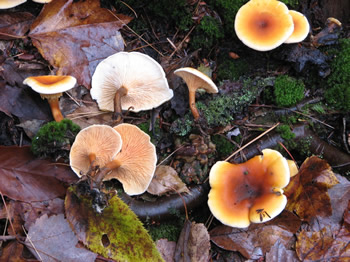
Figure 1.
A field collection of Hygrophoropsis aurantiaca.
Note the
variation in color and the darker cap center.
Photo © Rick Van de Poll.
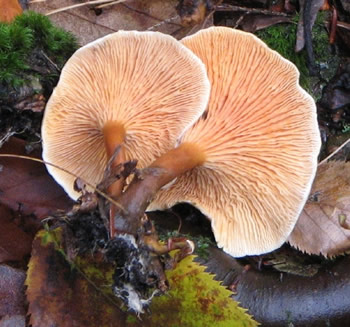
Figure 2. The gills appear somewhat blunt and are
repeatedly forked, a feature better observed in Figure 5.
Photo © Rick Van de Poll.
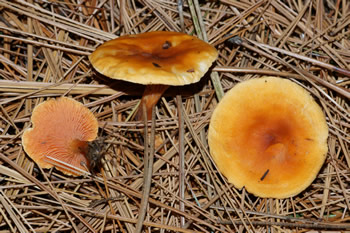
Figure 3. The pine needles indicate a typical habitat for this
species.
Photo © John Pliscke.
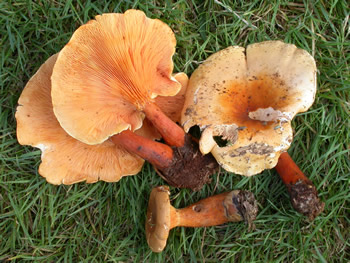
Figure
4. This was a display specimen at the 2011 NAMA
foray at Clarion University in PA. The specimens were
placed on grass for the photograph.
Photo © Gary Emberger.
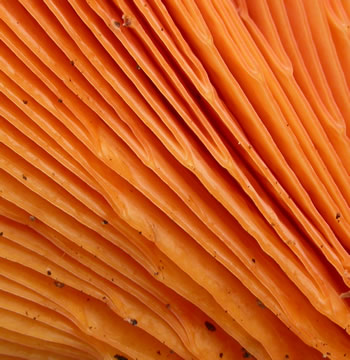
Figure
5. Note the repeatedly forked gills which are
somewhat blunt-edged. Compare to Omphalotus illudens,
a poisonous species that Hygrophoropsis aurantiaca is
sometimes confused with. Photo © Gary Emberger.